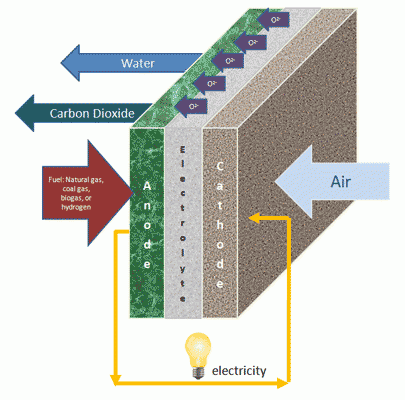Cost Of Ceramic Fuel Cells

The fuel cells have an operational life expectancy of around 10 years.
Cost of ceramic fuel cells. The sofc has a solid oxide or ceramic electrolyte. In that world a ceramic fuel cells solution has no viable place as solar and pv have eliminated the need to import any fossil fuels while ceramic fuel cells product relies on a fossil gas connection at 350 service fee per year. If hydrogen is the fuel electricity water and heat are the only products. Researchers have identified ammonia as a source for engineering fuel cells that can provide a.
August 20 2019 source. Fuel cells are characterized by their electrolyte material. The waste heat of bluegen produced by the process of generating electricity can optionally be used to heat water. A solid oxide fuel cell or sofc is an electrochemical conversion device that produces electricity directly from oxidizing a fuel.
University of delaware summary. They can provide power for systems as large as a utility power station and as. The first problem with ceramic fuel cells bluegen offering is that it s a fossil fuel generator. Advantages of this class of fuel cells include high combined heat and power efficiency long term stability fuel flexibility low emissions and.
Platinum is used in many fuel cells but the fraunhofer institute researchers used a ceramic material as the anode in this. Bluegen is powered by the fully integrated fuel cell module which by using solid oxide ceramic fuel cells ranks among the most efficient energy conversion systems currently available on the market. Fuel cells are unique in terms of the variety of their potential applications. However this percentage is much higher in early.
A fuel cell uses the chemical energy of hydrogen or another fuel to cleanly and efficiently produce electricity. According to the company a single cell one 100 mm 100 mm plate consisting of three ceramic layers generates 25 watts. A ceramic fuel cell is an all solid state energy conversion device that produces electricity by electrochemically combining fuel and oxidant gases across an ionic conducting ceramic. Improving the efficiency of power conversion is one way to make fuel cells more cost competitive with other sources of distributed.
This chapter introduces the general characteristics of ceramic fuel cells and gives a brief historical perspective on the development of this type of fuel cell. Based on predictions on fuel costs the break even point for those who purchase the device is around 8 years. The core technical innovation lies in the ceramic plates. Cost effective fuel cell technology date.


















